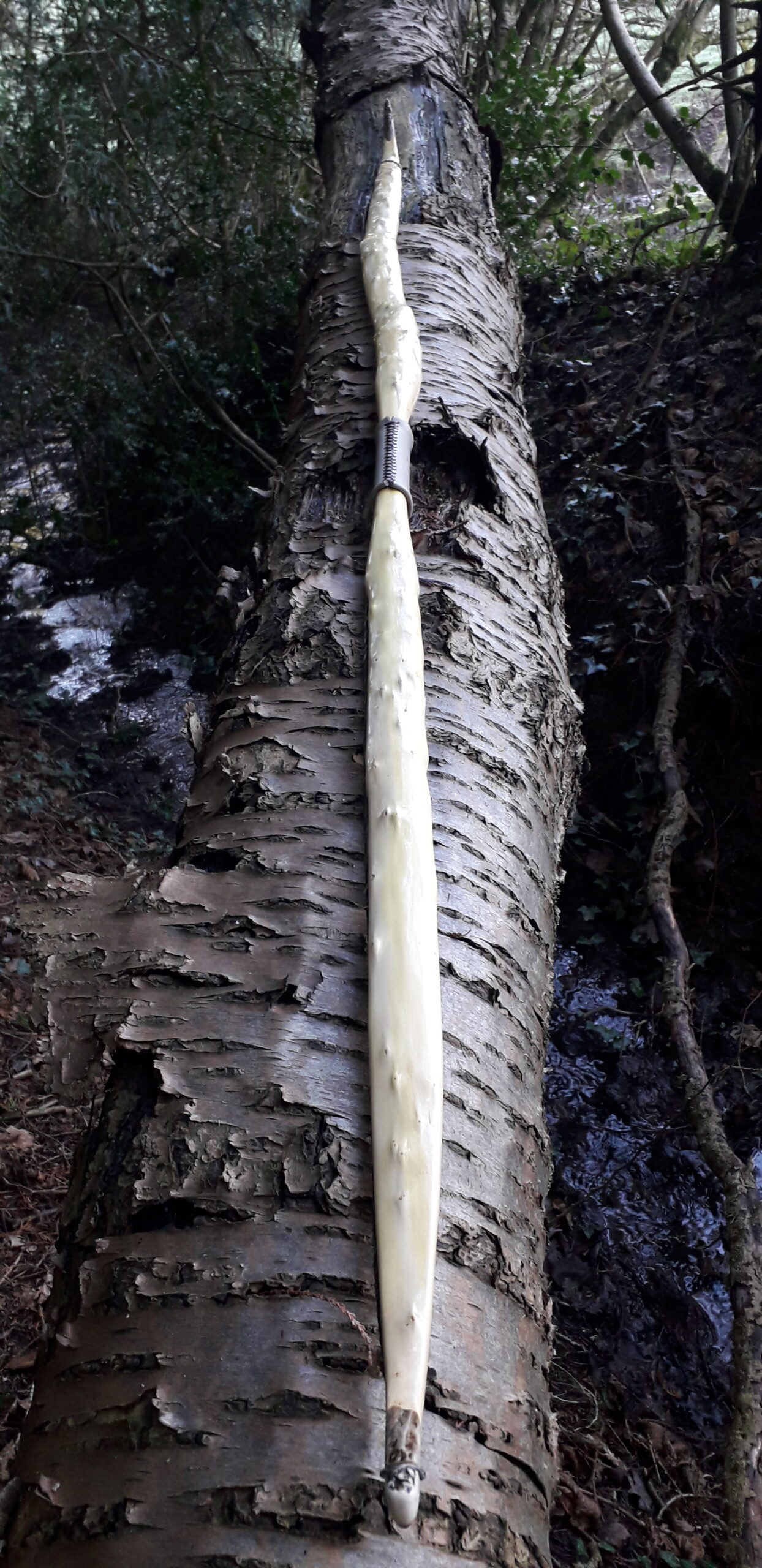This bow started out life as a 2-3” branch which I harvested a couple of years ago. Given all the knots, kinks and wiggles, I knew it was going to be a challenge to turn this ugly little stick into a bow. Yew is one of those few bow woods which can be incredibly forgiving however, so I decided to give it a go!
The main challenge with this branch was going to be placing a bow back somewhere on it, and in a way which would keep the back from including any of the larger more fragile knots. One particular face was cleaner than the rest, but by choosing to use this face as the bows back, I would have to deal with a significantly deflexed 8” section which would have to fall somewhere between one of the limbs fades and the middle of that limb.
The branch measured only 68” long so I would have little opportunity to manipulate the handle location anywhere other than in the approximate centre. Given all the potential weak points on this branch, I did not dare to aim for a bow any shorter than 66” nock to nock.
I knew that I’d be able to steam out some of the unsightly deflex in what ended up being the top limb, but given all the knotty material in this deflexed section, I dared not try to straighten it out completely as the likely hood of one on the knots popping was very high.
After roughing out the basic limb thickness and face profile, I set about reducing the deflexed section with steam. After that was taken care of the small amount of string misalignment plus a little twist was corrected with some dry heat. At this point I also steamed in the gentle recurves. Now I had a more workable and predictable shape, I could then start to think about the final limb width and general profile/cross section.
The heartwood content of this bow was not great and the sapwood was about 8-10mm thick. The back was covered in small raised pins so chasing a ring was totally out of the question. And since the likely-hood of this branch ending up as firewood was high, there was no way I would consider investing time and effort to sinew back a risky bow like this, just to get away with violating the back in order to improve the ratio of sapwood to heart wood.
As with all branches, the pithy centre was biased towards the side which had the tighter growth rings (1-2mm) which happened to be on the same side of the branch which I’d chosen as the back. This meant that the pith was currently contained within both limbs and ran right through the handle.
Whilst I have no problem with the pith running through the handle section or even the thicker parts of the fades, I do not like leaving the pith in the working parts of the limbs. Experience has taught me to expect cracking, splitting and even fretting to occur when the pith runs close to the surface of the belly material.
Given that the crown on this branch was significant and the pith was currently buried inside the roughed out limbs I opted to hollow out both limbs to match the crown, whilst hopefully getting deep enough to remove the pith at the same time.
This worked fine but left me with very little heart wood. In fact the sapwood to heartwood ration was around 70/30%. Not ideal so I decided to take the sides in as the sides were entirely sapwood. This reduced the limb width down from about 1” 7/8ths to around 1” 5/8ths.
Now that the pith was out of the limbs and the heartwood sapwood ration had been improved, I didn’t have a great deal of bow left to play with, so I had to be realistic with the outlook. I guessed she would probably make for a finished bow around 35 40lbs at best. So I was really suprised when I actually managed 51lb at 27”!
I tillered the bow to 27” as my brother will likely get this bow. His draw length on a good day is about 27”. I took the tillered (albeit unsealed) bow stump shooting for a couple of weeks with only tillering nocks cut in and a leather strip wrapped around the handle to double as a grip and arrow pass. After a hundred plus arrows I checked her over for faults but found none.
I was expecting some of the steam correction to pull out in the deflex section but it didn’t. The finished bow looks like it has a very positive tiller but it is deceptive. The deflex section right out of the top fade is what gives this bow the look of excessive positive tiller.
In reality, this bow feels very well balance through the entire draw cycle and the limbs time together great when I shoot it with split fingers. I’ve shot enough bows over the year to be able to feel when a limb is weaker than the other. Despite the appearance, this bow is very well balanced.
After double checking the bows tiller by feel and then by tiller tree, I confirmed that the top limb is only slightly weaker than the bottom limb which is perfect for both my use, and my brothers use, since we both shoot split fingers.
It never ceases to amaze me how you can take a bow which looks to be tillered very well, only to draw it back and feel that torque on the wrist that you get when one limb is significantly stronger than the other. Nowadays, when it comes to final tiller, I place more emphasis on feel than I do on appearances. Where wooden bows are concerned (especially character bow) appearances are incredibly deceiving!
After shooting and sanding, I weighed her again and she was settled in at 48lbs at 27”. Happy with that I fitted her static recurved tips with a pair of Red Deer antler tip overlays, and I inlayed the arrow pass with a patch of buffalo horn. For the handle I chose a simple leather grip fitted after sealing the finished bow with 8 coats of Tru-Oil.
This bow put a smile on my face. I could well have imagined this bow breaking mid tiller. Not only was I impressed that she held together, but she actually ended up a being a proper little looker too. So much character and more than satisfactory performance has made this little bow one of my favourite character bows so far this year. (I have others to show off soon!)
In terms of performance, with a 12 strand B50 string on she sent a bunch of 450 grain arrows over the chronograph at an average speed of 143ft/sec. Not bad for a knarly old branch bow! Mass is 560 grams and she carries about ¾” of set immediately after unstringing which returns back to almost straight after resting.
Here she is. Enjoy!
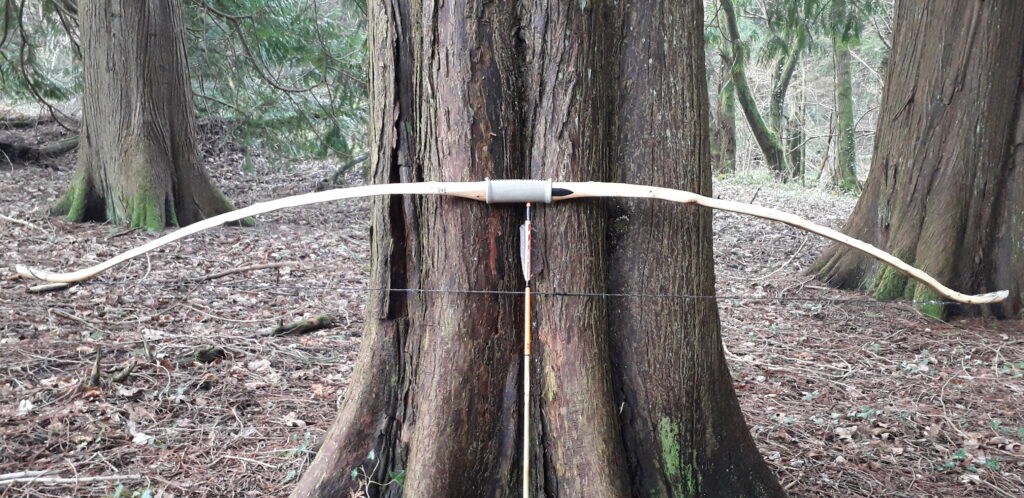
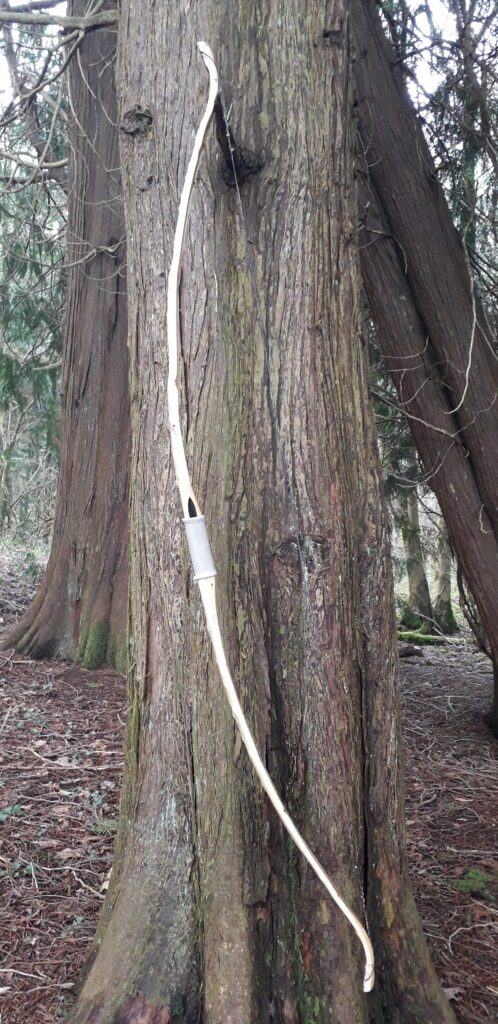
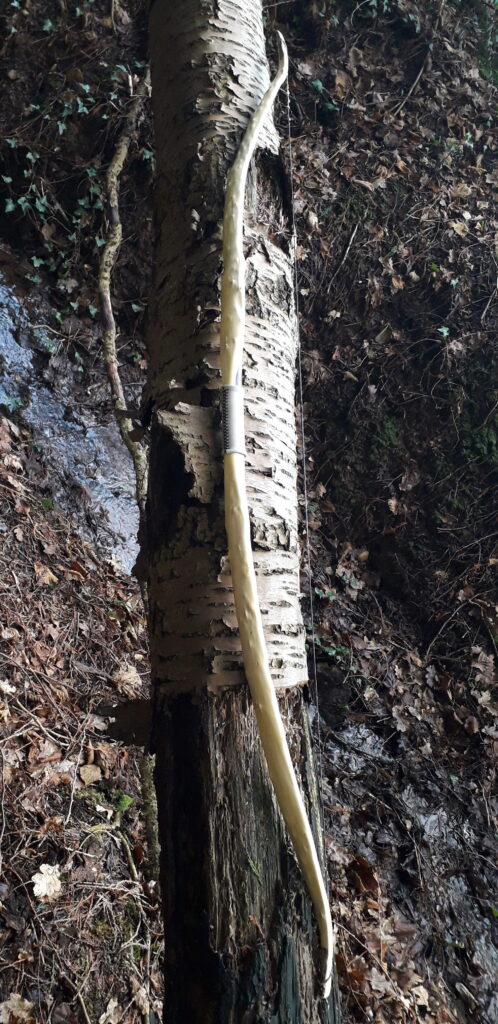
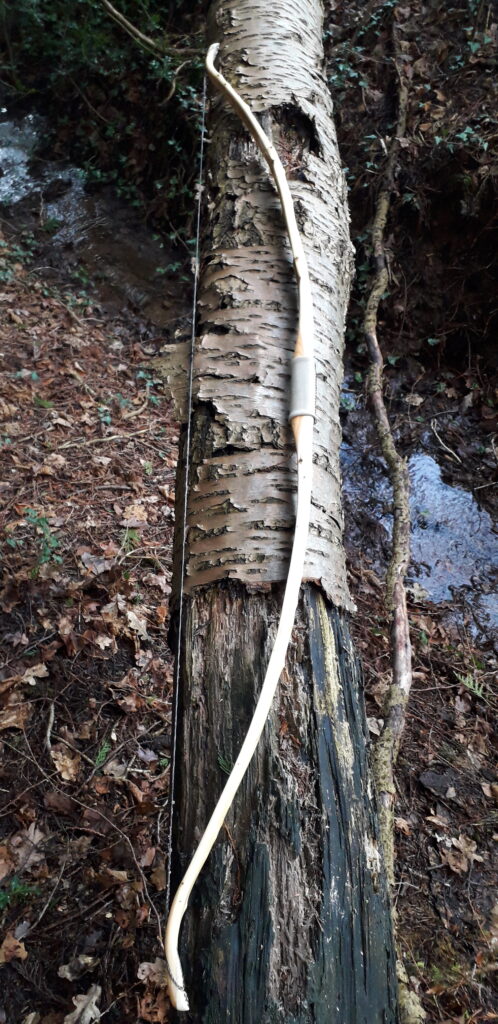
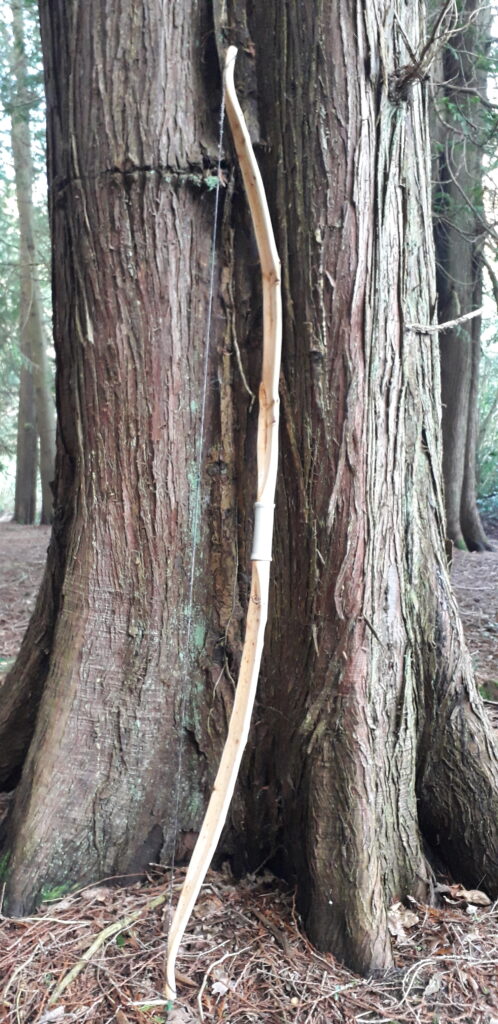
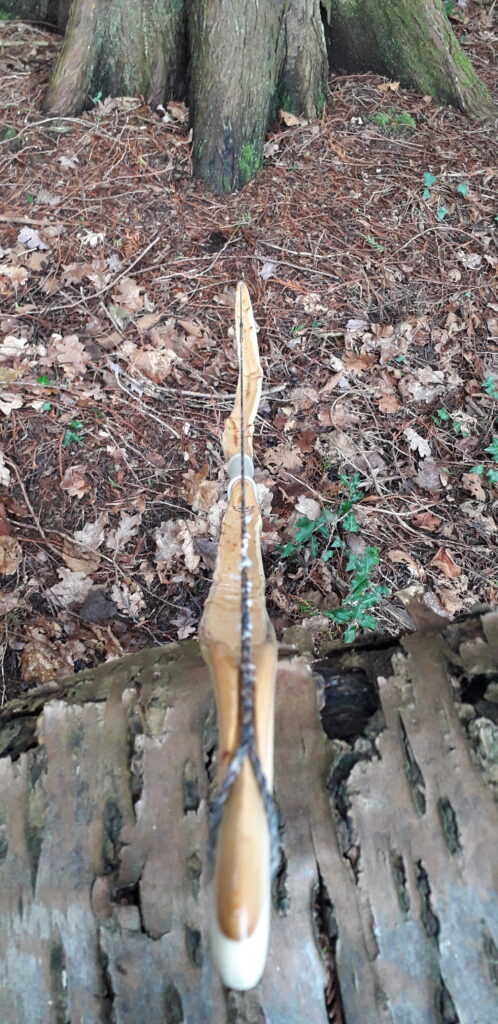
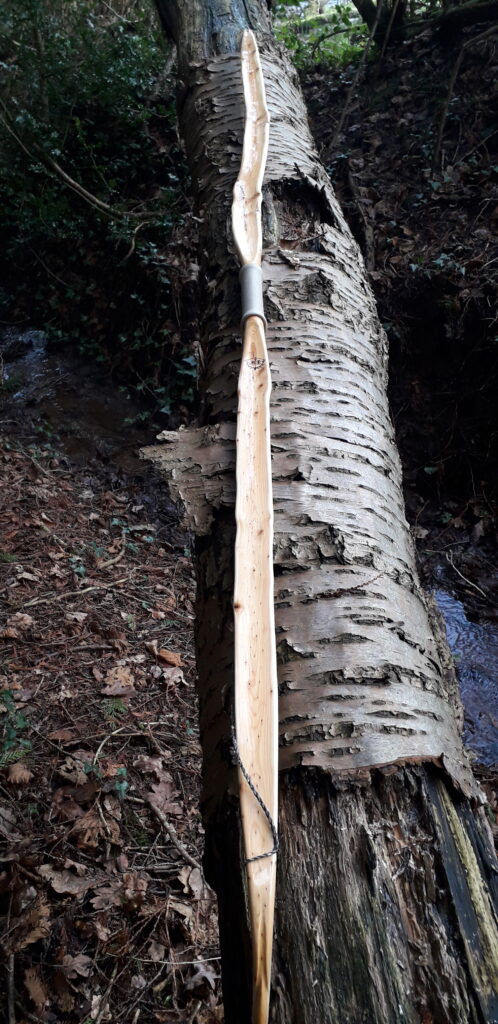
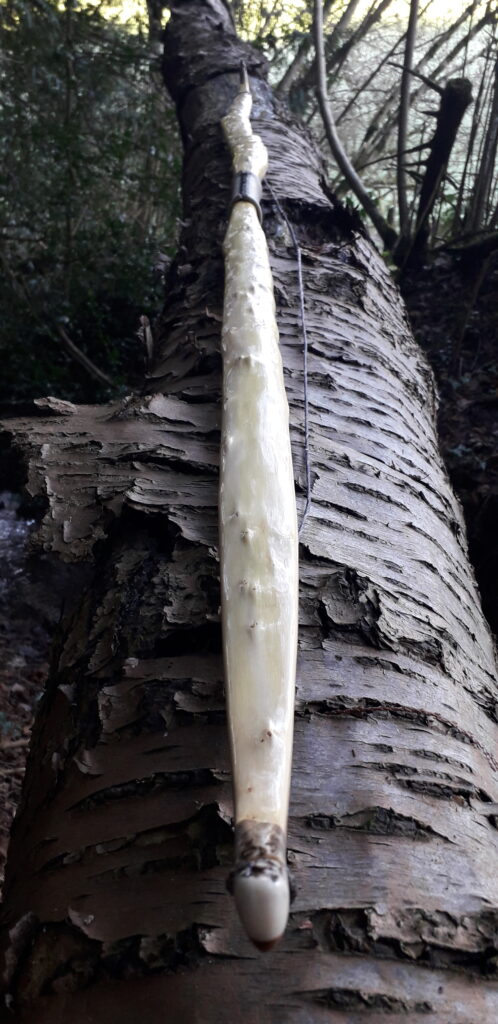
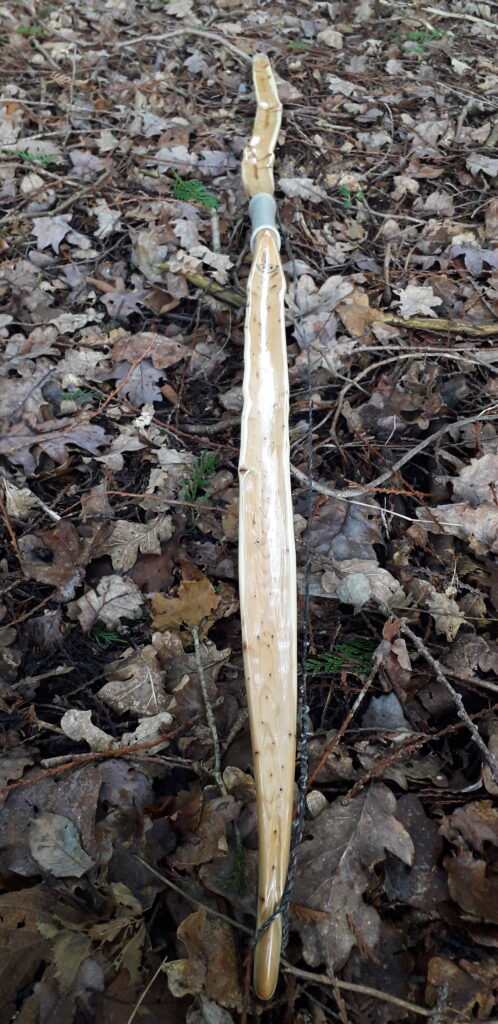
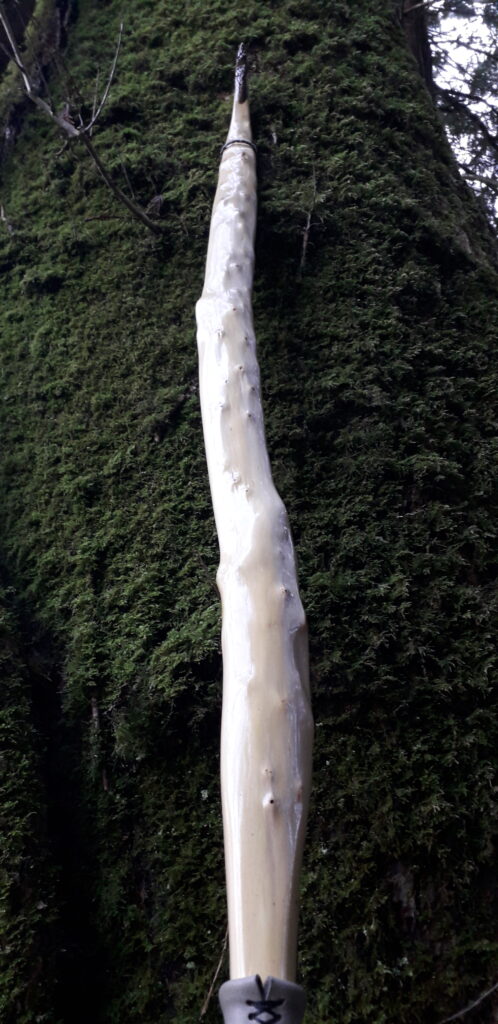
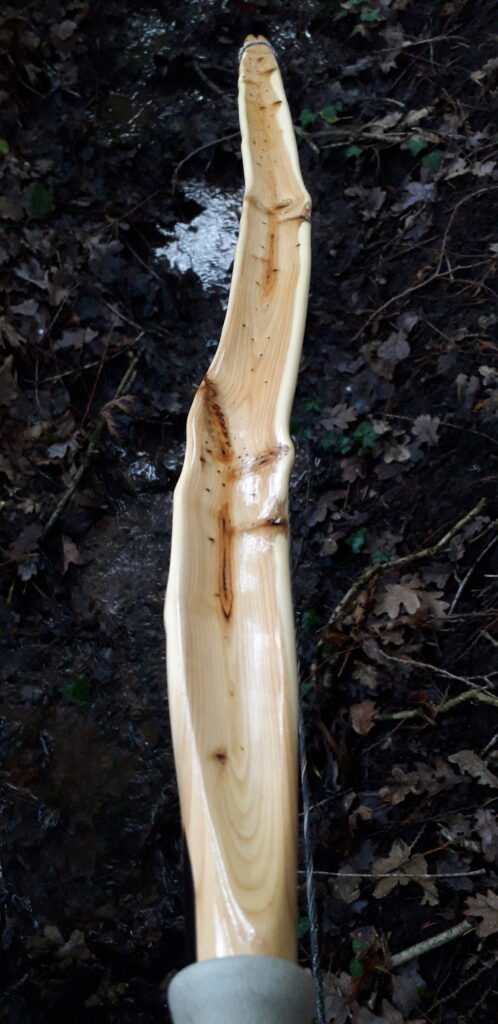
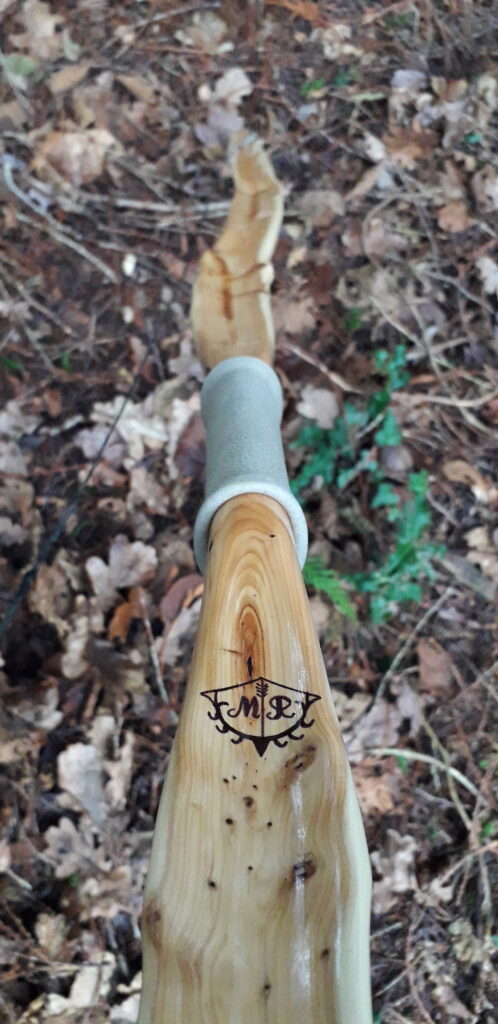
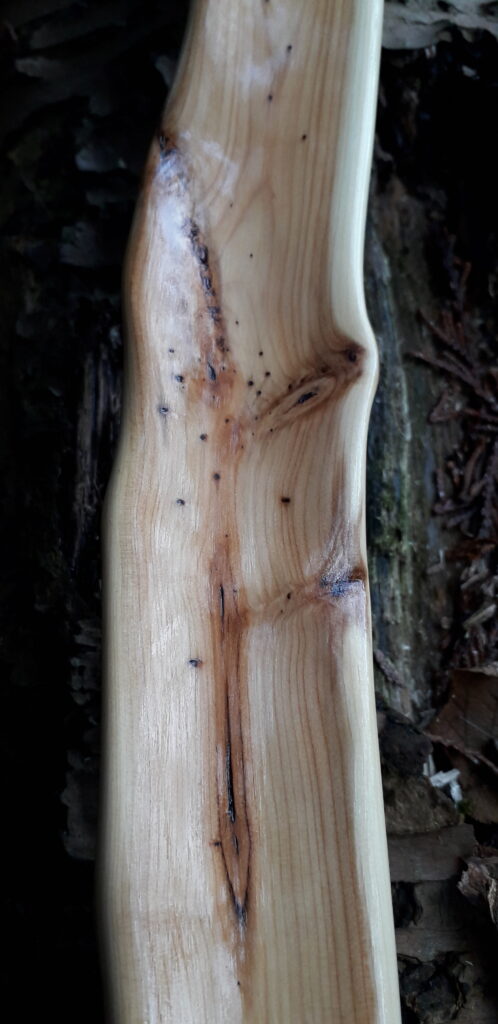
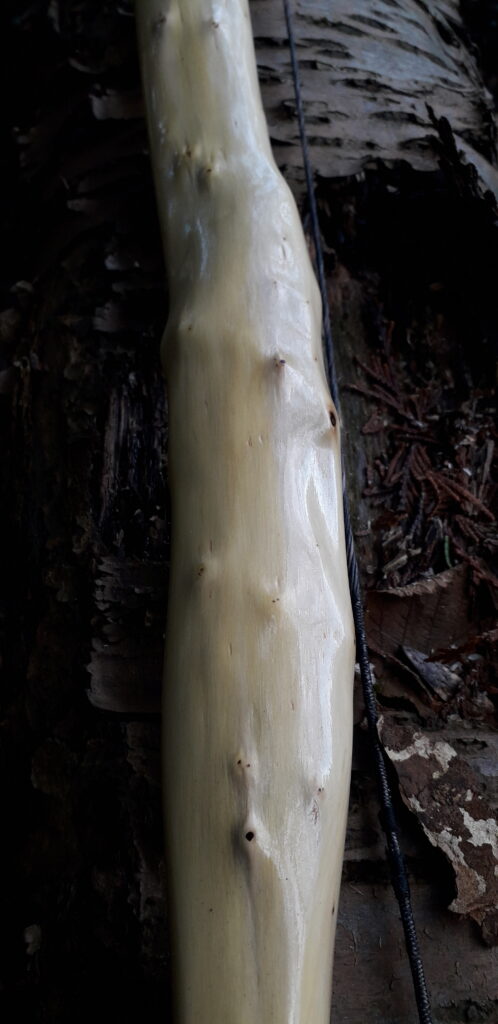
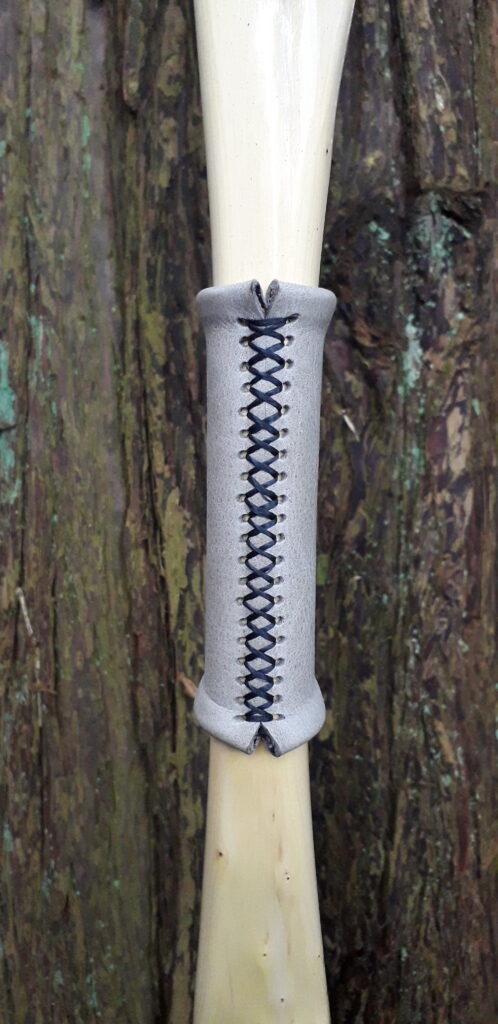
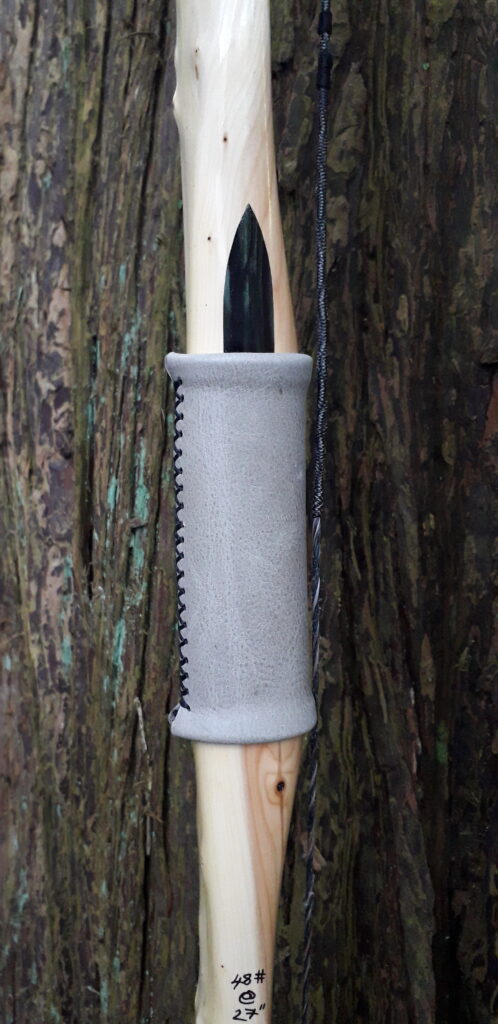
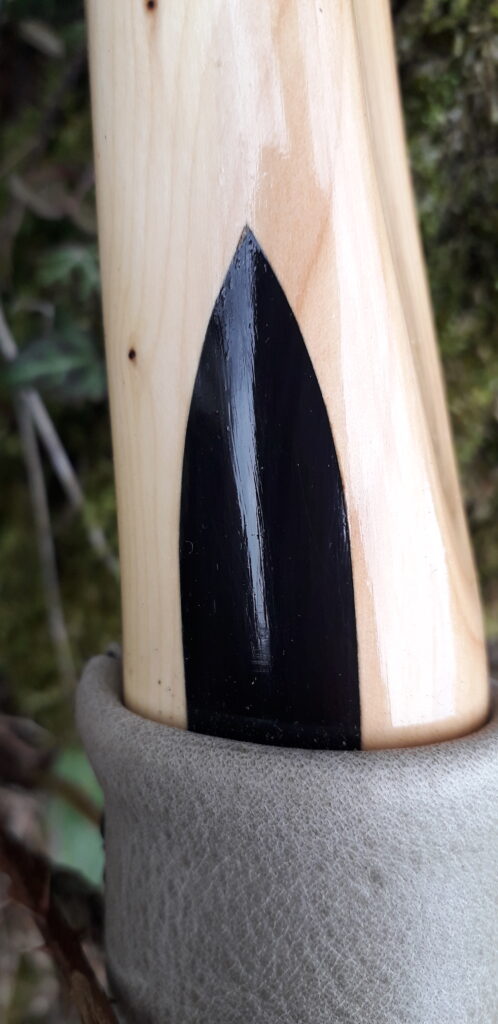
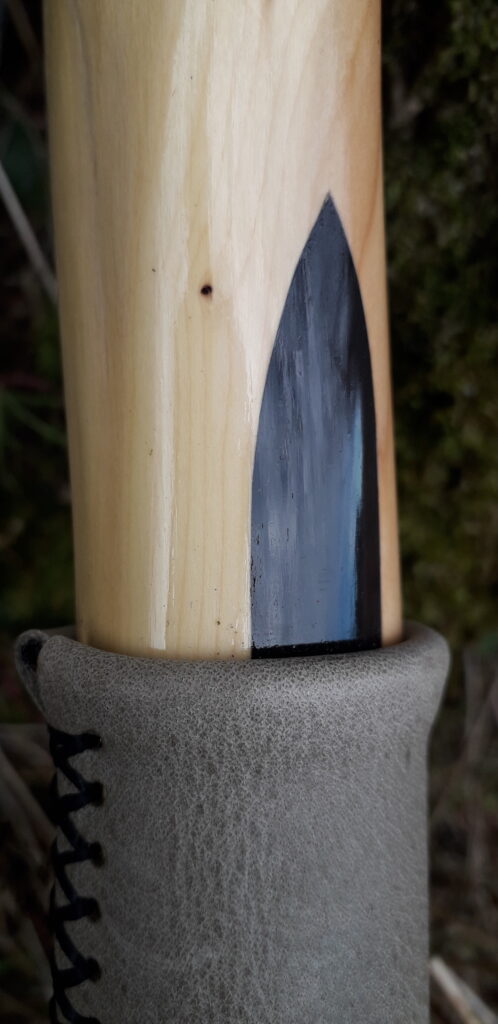
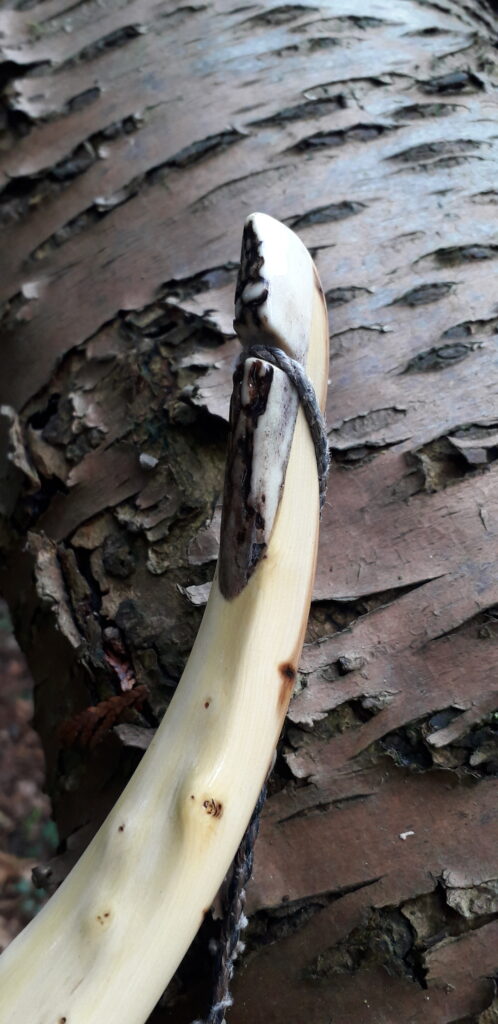
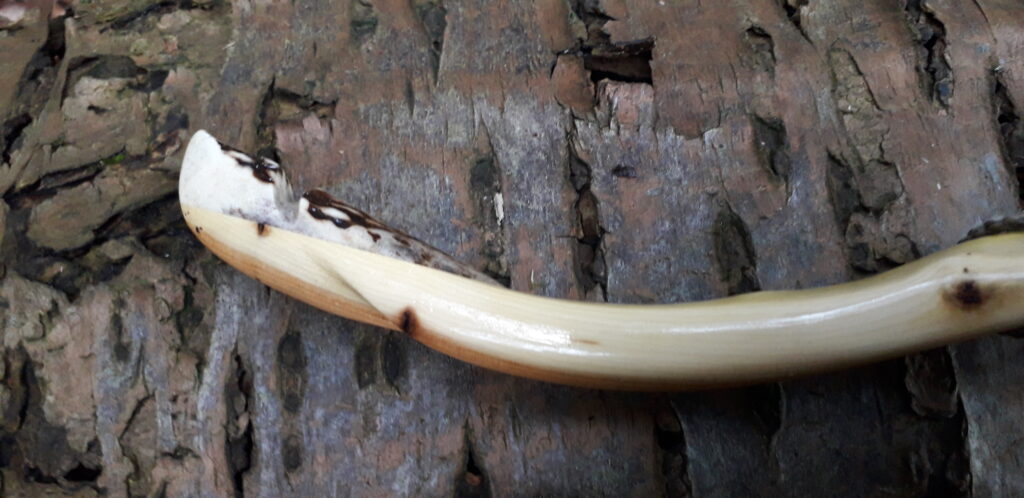
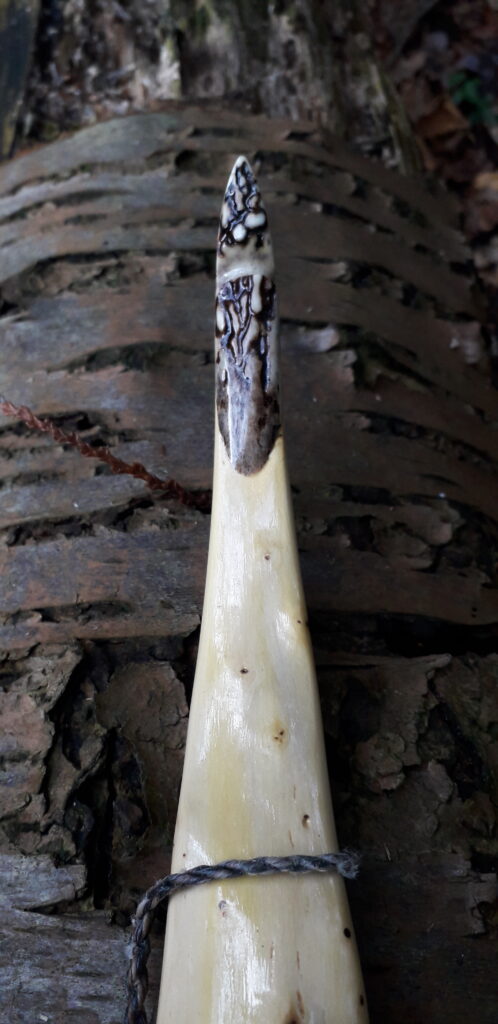
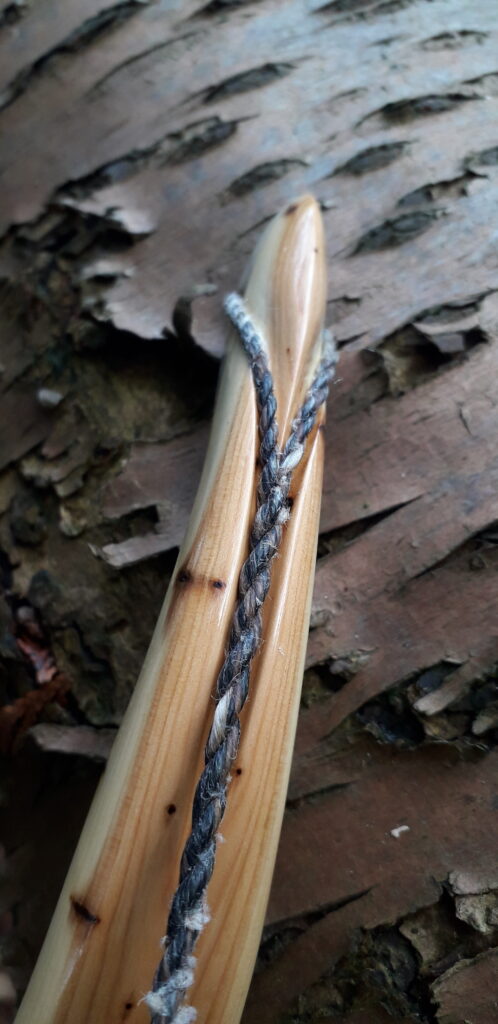
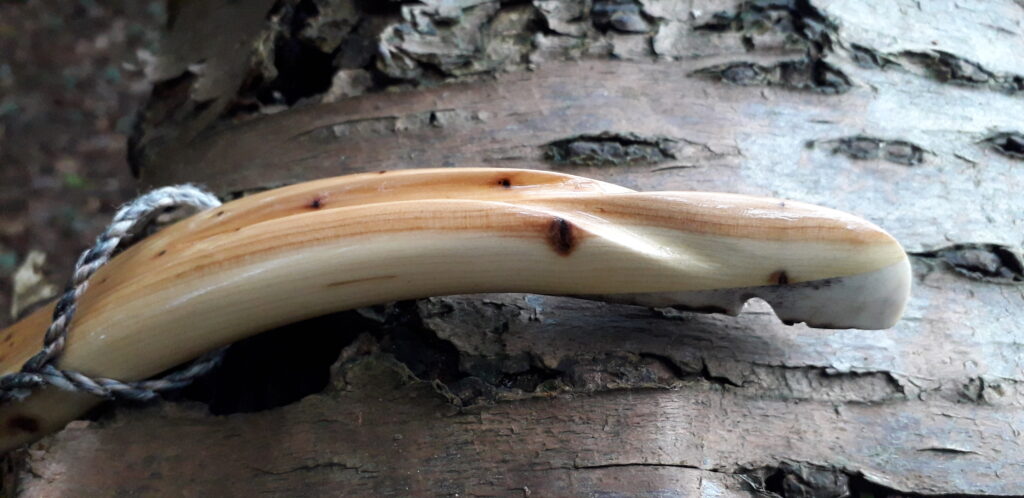
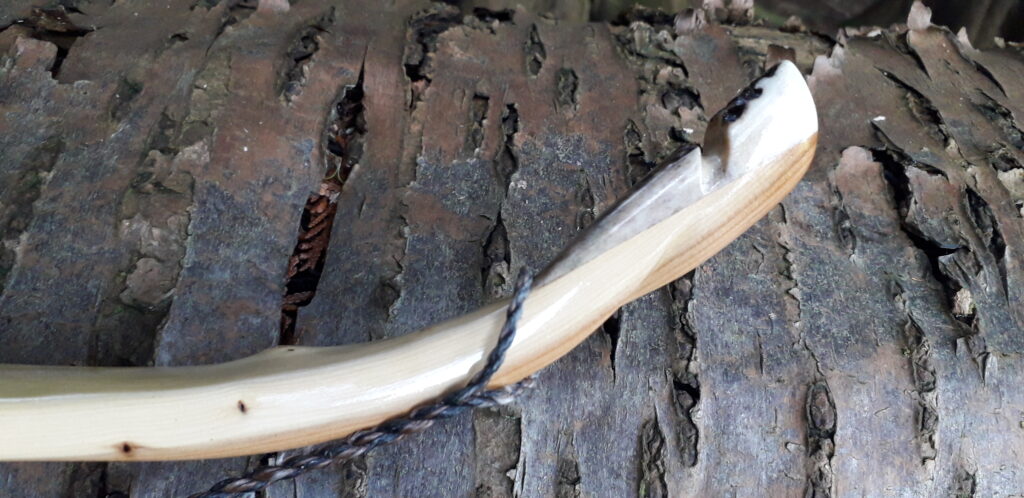
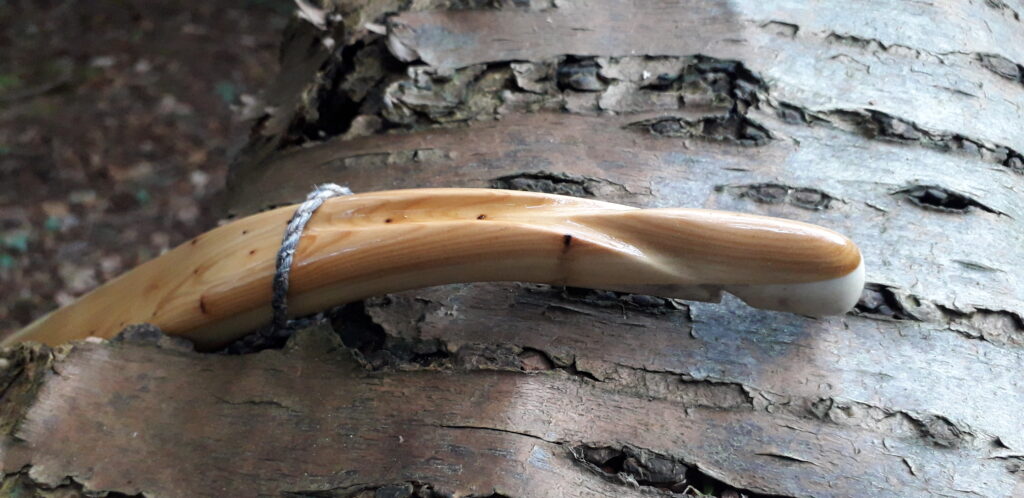
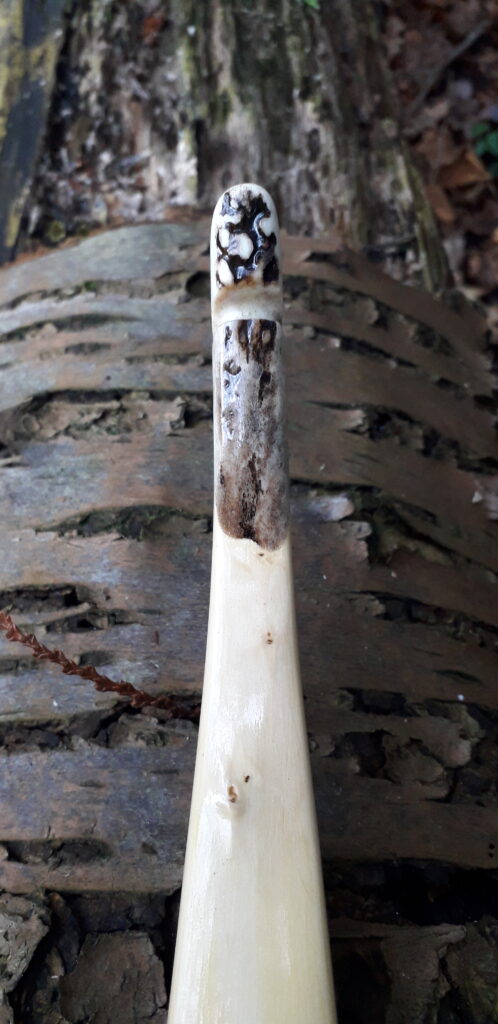
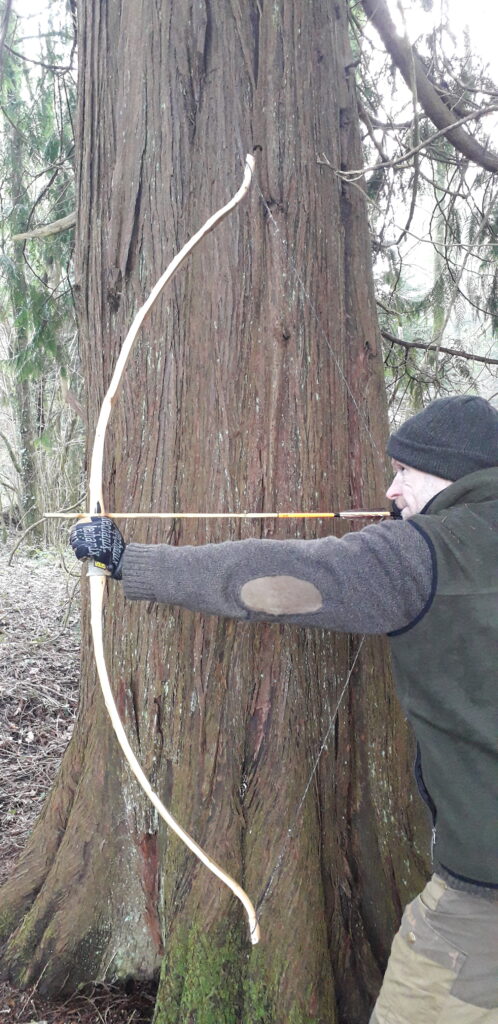
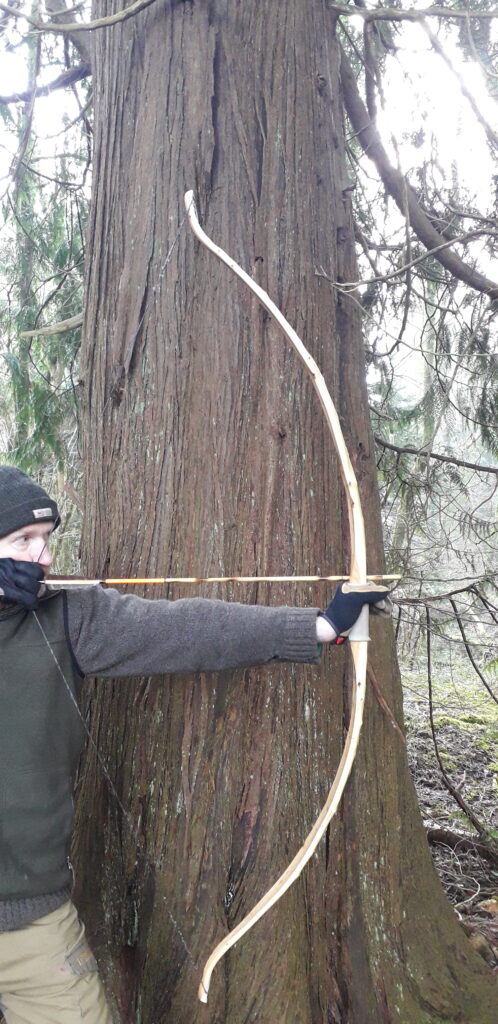
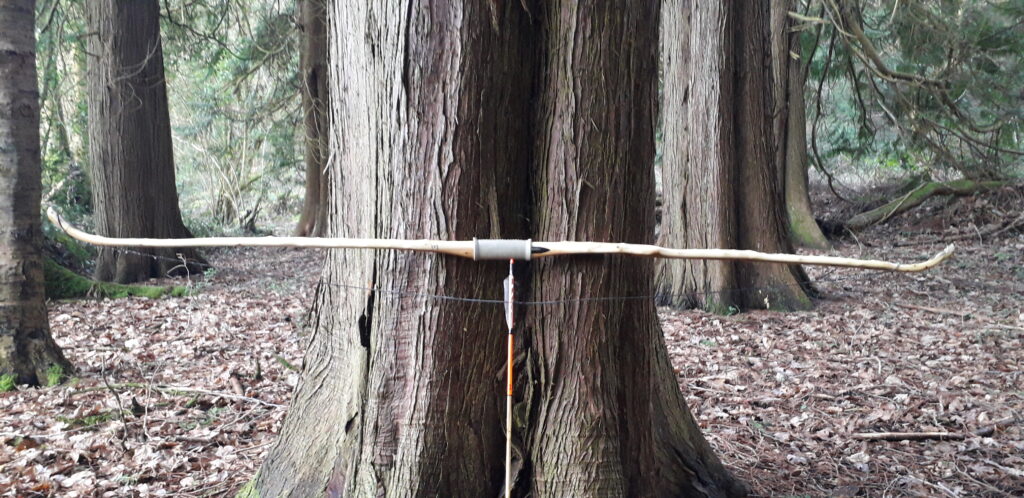
Thanks for looking!
